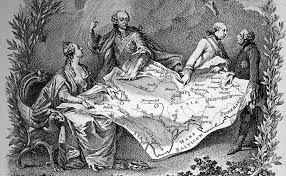The First Partition of Poland and the Issue of the European Balance of Power in Contemporary English Media (1772–1774)
DOI:
https://doi.org/10.15170/SPMNNV.2021.11.10Keywords:
partition of Poland, balance of power, Anglo–Polish relations, Polish–Lithuanian Commonwealth, English press, English pamphlets, political iconography, Edmund Burke, John LindAbstract
Prussia, Russia, and Austria gradually divided the territory of the Polish–Lithuanian Commonwealth in three stages between 1772 and 1795. In their partition policy, Prussia and Russia managed to make Austria take sides with them on the first, as well as the third occasion, and during these partitions, the Western powers such as France or Great Britain – although fully opposing such violent breach of Polish–Lithuanian statehood – did not act against them. A new kind of balancing policy and partition diplomacy materialized in these partitions of Poland (rozbiory Polski) and the loss of Polish sovereignty. The present paper seeks to explore the roots of this peculiarly balancing constellation of great powers, analysing the political environment that led to the first division of Poland in 1772, while investigating the opinion of Great Britain on the partition. The first part of the study places the 18th-century European political scene in an ideohistorical contéxt, présénting thé concépts of ‘réason of staté’ and ‘balancé of powér’ that motivated the dynamics of diplomatic negotiations. In light of this, the second part describes the motivations and key events of Polish (domestic) and European (great power) politics in the 18th century up to the time of the first partition, while the main part analyses the English press reaction to the division, its visual sources and the relevant pamphlet literature of 1772–1774.


